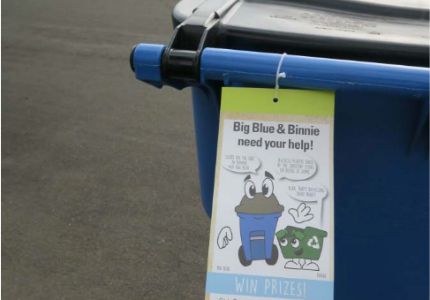Contamination Monitoring
Monitoring containers for contamination is an essential part of a jurisdiction’s collection service.
Keeping organic waste clean helps:
- Ensure organic material can be processed and diverted from the landfill.
- Develop markets for recycled products in California.
If providing a 3-container or 2-container organic waste collection service, a jurisdiction must monitor contamination by
- Route Reviews: Reviewing containers on commercial business and residential routes and/or
- Waste Evaluation: Evaluating waste at specified solid waste facilities.
Contamination monitoring and resident and business education can help make cleaner organic waste streams.

Route Reviews
If choosing route reviews, a jurisdiction must:
- Randomly select containers
- Ensure all collection routes are reviewed annually
- Educate residents and businesses if there is contamination identified in their containers on the route reviews
For more information, see Best Management Practices for Implementing a Route Review Program.

Waste Evaluations
If choosing to conduct waste evaluations, a jurisdiction must do them at least twice per year in two different seasons.
If the sampled weight of any container type has more than 25% contamination, the jurisdiction must either:
- Educate all generators on the evaluated routes or
- Perform a targeted route review on evaluated routes and educate generators with contamination.
For more information contact: Short-Lived Climate Pollutants (SLCP), Organic Waste Methane Emissions Reductions, SLCP.Organics@calrecycle.ca.gov
